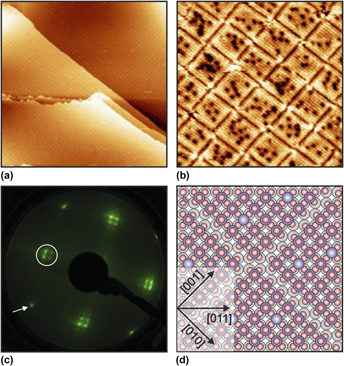Article contents
Ultrathin oxide films: Epitaxy at the two-dimensional limit
Published online by Cambridge University Press: 16 October 2017
Abstract

The epitaxial growth of two-dimensional oxide layers on metal surfaces is examined in view of the 1949 van der Merwe proposition that epitaxy requires a pseudomorphic monolayer. It is argued that this limitation is relaxed in the 2-D case and that ordered oxide phases can grow out of a variety of interface scenarios, ranging from pseudomorphic to incommensurate. Prototypical examples of binary and ternary oxides supported on noble metal surfaces are presented, and the structural peculiarities of 2-D oxide phases are emphasized. The usually strong coupling at the oxide–metal interface leads to the stabilization of novel structure concepts that are not encountered in the, respective, bulk phases. The structural flexibility of 2-D lattices is discussed, and their ability to accommodate strain in generating novel 2-D oxide phases is emphasized. In the case of weakly coupled systems, it is reported that more subtle interactions at the interface can create periodic nanoscale morphologies and particular growth patterns in subsequent layers.
Keywords
- Type
- Invited Article
- Information
- Journal of Materials Research , Volume 32 , Issue 21: Focus Issue: Jan van der Merwe: Epitaxy and the Computer Age , 14 November 2017 , pp. 3924 - 3935
- Copyright
- Copyright © Materials Research Society 2017
Footnotes
Contributing Editor: Johan Brand Malherbe
References
REFERENCES
- 6
- Cited by



